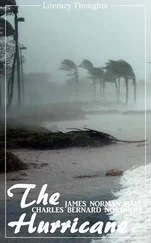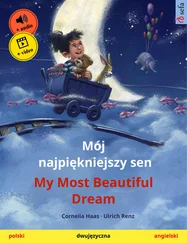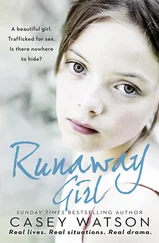I tried another scheme. I approached my nemesis, who was smoking his pipe near the convenience store, and offered to pay him to fly to the moon and stay there until my work was done. I was told by three different people that this particular angakok was quite capable of flying to the moon.
He jammed his thumbs up into my nostrils and pushed me so hard that I stumbled backwards. This was shockingly painful. I took this to mean that my request had been denied. He said, “You walk backwards well. Why not walk backwards home now.” I told him that my home was thousands of miles away. He said, “Start now before the bad weather.” Later I was told by a bystander that I had misinterpreted what the angakok had muttered. What he actually said was, “Start now before I bring in bad weather.”
In Pangnirtung I worked with storytellers in the morning and spent the afternoons transcribing tapes, getting help with vocabulary, filling notebooks, and walking around town and its outskirts. I especially enjoyed visiting the cemetery, where simple white crosses were bowed daily by wind off the sea. Every time I visited late in the afternoon, I saw an elderly woman dressed in winter bundling who would walk from cross to cross, setting them upright again, tapping them down with a hammer.
Though I never asked, I assumed this was her daily task, perhaps self-appointed. What is more, she was the only Inuit person I had seen being accosted by the angakok. I observed him walk up to her in the cemetery, mumble something, and push her down. She rose to her feet and spit at him. This struck me as a scenario borne through the ages — it could have happened a hundred years ago, or two hundred, or a hundred years from that afternoon, a timeless confrontation with no discernible reason behind it, though I did not know what personal history there was between the old woman and the angakok, nor whether it had anything to do with her association with the Christian cemetery. No matter. This angakok was a nasty piece of work. He had arrived at Pangnirtung a menace and built on that daily. I saw this unfold.
In the few Inuit villages I had worked in before Pangnirtung, recording, transcribing, and translating oral literature had given me a lens into the mental culture and mythic history of a community, although that is putting things in too academic a light. But in Pangnirtung it didn’t work out that way. Every moment in that village seemed off-kilter somehow; I could not get any real purchase on life there. In Pangnirtung, the stories themselves seemed natural forces to be dealt with. They had put my nerves on edge.
Fairly early in the translation process I began to feel that despite an increasing fluency in the language, I was ill equipped to perform my work with any semblance of poise or competency. Still, I was being paid a decent salary and all of this was a unique experience. I wanted to see it through.
But night after night in my dreams I reprised the Inuit narratives. It got to the point where I imposed insomnia on myself, preferring not to sleep in order to avoid that endless loop of stories. This was my situation; I had to look at it directly. Finally a person has to sleep — but I wasn’t sleeping, not really. Brief naps here and there, no more than fifteen minutes at a time, for six, seven, eight days running. It was not so much my drinking too much black coffee as it was that the characters in my dreams — the characters in the Inuit folktales — were constantly drinking black coffee.
Strange but true. Sometimes they ate coffee grounds.
Stenciled in outsize black lettering on the side of the convenience store, — in both Inuit phonetics and English, were the words Blessed Be the Cheerful Buyer. Accompanying the words was the painted figure of Jesus handing some Canadian dollar bills to a merchant. On closer inspection, this Jesus had an uncanny resemblance to the rock-and-roll legend Jim Morrison (perhaps the sign painter was a fan). The store carried all manner of goods and necessities: winter clothing, canned foods, rifles, ammunition, pharmaceutical products. At the back of the store, on a chair next to the coal-burning stove, I often sat and worked on the stories.
One late afternoon, Michael Pootgoik, who was about forty and who managed the store, showed me some snow globes he had just unpacked from a shipment delivered by mail plane, along a route that originated in Winnipeg and serviced many Arctic villages, including Churchill. The pilot’s name was François Denny; he had gone into the store to take a nap on a cot in the supply room. “He snores like a walrus,” Michael said. “I have to put the radio on.”
There were two dozen glass snow globes in the shipment. Each contained a diorama of an indoor or outdoor scene in miniature. As he dusted each globe with a moistened cloth and inspected it for hairline cracks, Michael also turned it upside down and then right side up so that the fabricated snowflakes inside fell like confetti on the interior tableau. There was a Christmastime village, perhaps somewhere in New England, with a Christmas tree in the town square decorated with angels; children sang carols on the porch of a house. There was a hunter wearing a checked flannel shirt, black trousers, snow boots, and a thick fur hat, aiming his rifle at a buck with its head turned upward to the falling snow. There was a line of three hula dancers wearing grass skirts and no blouses, their breasts hidden by extravagant leis (seeing these Hawaiians in the snow made us both laugh). There was Little Red Riding Hood pursued by the Big Bad Wolf. There was — my favorite — a string quartet sitting in individual chairs on a bandstand in the middle of a tree-lined park. There was a blacksmith shaping a piece of iron in his shop, which was shown in cutaway relief, complete with bellows and hammers and tongs. There were ice-fishing shacks on a pond. There was a cluster of stars and planets on the ground, as if fallen from the heavens in their original array. There was a rural schoolhouse with children on its playground. And there were others I cannot recall.
“Most every family in Pangnirtung has one of these,” Michael said.
The next day, I decided to purchase a snow globe as my going-away gift in reverse, for Mary, the five-year-old daughter of my host family. The moment I stepped into the convenience store out of the cold slanting rain that was forming black ice on stretches of road, I saw the angakok curled up in the fetal position on the floor near a shelf that contained power tools. I hoped that he was asleep.
Michael was working the counter as usual. I told him I wanted to buy a snow globe for Mary Pootgoik and asked to see the inventory. “I already sold four,” he said, “but I’ll set out the rest.” He lined up the globes on the counter. I took my time looking them over. “Which do you think Mary might like best?” I asked.
“Why not bring her in and have her pick one out?” Michael said.
“Except that would ruin the surprise.”
“A surprise is over quick and then you still have to hope you made the right choice, eh?”
“Okay. Good idea.”
I left the convenience store purposely avoiding the angakok. I found Mary, and as she and I walked into the store she pointed at the shaman and said, “That man stinks. I’m not afraid of him. He can hurt me and he stinks but I don’t care.”
Mary, a chubby little kid with the sweetest face and the brightest, most stalwart disposition on earth, should have been my teacher in all things having to do with that miserable angakok. At the counter, she was delighted to be able to pick out a snow globe. “I think you’re giving me a present because I put a lot of sugar in tea when I make it for you,” she said. She sat on the counter, dangling her legs, and picked up snow globe after snow globe, studying each one with the utmost seriousness. Finally she said, “I want this one.” She held up the snow globe with the hula dancers inside.
Читать дальше












